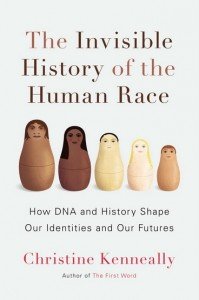
In this excerpt, Ms. Kenneally initially seems to be praising the efforts of the LDS Church for assiduously collecting records of the human family. She writes about how knowledge of family history reduces anxiety and is correlated with other improved outcomes for children. The magnitude of the collection is many times the information contained in the US Library of Congress, with information being added at a rate similar to adding the contents of the Library of Congress every year. Kenneally notes how these efforts have driven technology.
But then the article begins to focus on the negative. First up is the conjecture that if only the records in the Church vaults were to survive, the future remnants of humanity might think everyone was Mormon. Despite the explanation that proxy ordinances are an offer to the dead, rather than hijacking the identity of the dead against their will, Kenneally’s eloquently explains the concern of those groups who oppose the Church’s efforts to offer salvation to all. Kenneally clearly hasn’t used the website, which has ample facility for capture an individual’s actual life experiences.
Further, the article goes on to say some future, post-apocalyptic remnant looking at the LDS records would presume there had never been anyone who was married to someone else of the same gender and implies that there is no way to record extra-marital children. This, again, is absurd.
The website defaults do focus on the idea that a child has two parents, a mother and a father. However it is perfectly possible to add as many parents as one wishes. Further, one can add any number of notations regarding ceremonies, including photos and stories. Therefore it is completely possible to document as much as anyone wants about their family history, including non-traditional families.
Where the GUI of the Family Search website will offend those in same-gendered relationships is the continually insistence that one add a wife (to a male individual) or a husband (to a female individual).
On the other hand, my deceased son, who died when he was only 8 days old, also has that same GUI suggestion:
I suppose as the mother of an infant that died, I could get seriously bent out of shape. Heck, were I still an individual who wished to be married and who hadn’t yet achieved that desirable state (or who no longer had a spouse), I could get seriously bent out of shape.
And yet, what harm has been done in past generations because there wasn’t a prompt requesting that the spouse’s information get recorded? How many of us are able to trace our male progenitors, but find ourselves unable to identify the females, beyond perhaps a first name?
A PC version of Family Search might refrain from suggesting a spouse be added if the individual was at least X years old. But I don’t know what value one would add for X. Making X equal to zero ensures that one doesn’t have to deal with offending by specifying an age at which it is appropriate to marry.
A PC version of Family Search might find a more generic term, like spouse. But what of people who have engendered children without benefit of legal ceremony? They aren’t spouses, and yet we do want them entered in. Would we want to specify the nature of the relationship between individuals in a relationship? Then would we have wife, mistress, random lass, sex partner? And how would we translate that into other languages?
A PC version of Family Search might allow anyone to be added as a spouse, where it currently insists that a spouse must be of the opposite gender. Here I actually am a bit sympathetic with those who complain, merely because if we want to capture information about the whole human family, it might not be helpful to leave barriers that alienate individuals up front. If a hypothetical Madison Brown, who is in a same gender relationship, declines to ever interact with Family Search because of the GUI, then Madison Brown’s relatives will never be able to learn of the information Madison might have added to the database.
Thus we are poorer, through lack of information.
I can imagine that there are those who want to make certain that the Church doesn’t acknowledge same gender relationships as having the potential to become eternal, as we hope can be the case for heterosexual relationships. This could be handled via policies regarding which relationships may be solemnized by proxy in the temple, rather than via the GUI that all users must interact with. But any decision to modify the GUI will be up to those in charge of Family Search.
In the mean time, if folks are desperate to ensure that they are recorded as they are, then I would suggest that they use the system and make full use of the existing tools to document their lives, their unique beliefs and the individuals they care about.
Despite the impression conveyed by Ms. Kenneally’s article, the LDS genealogy work and tools do not prevent actual history from being recorded. Any who assert that they prevent documentation betray their ignorance about the tools.
